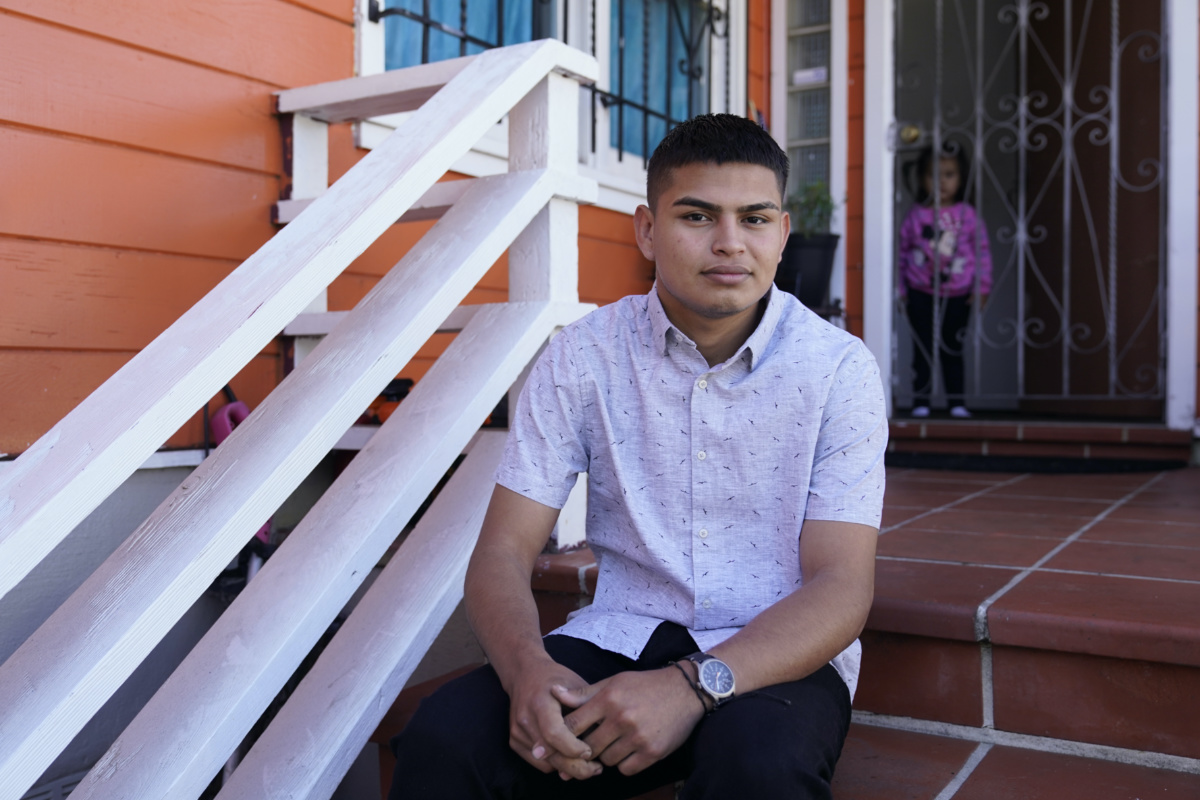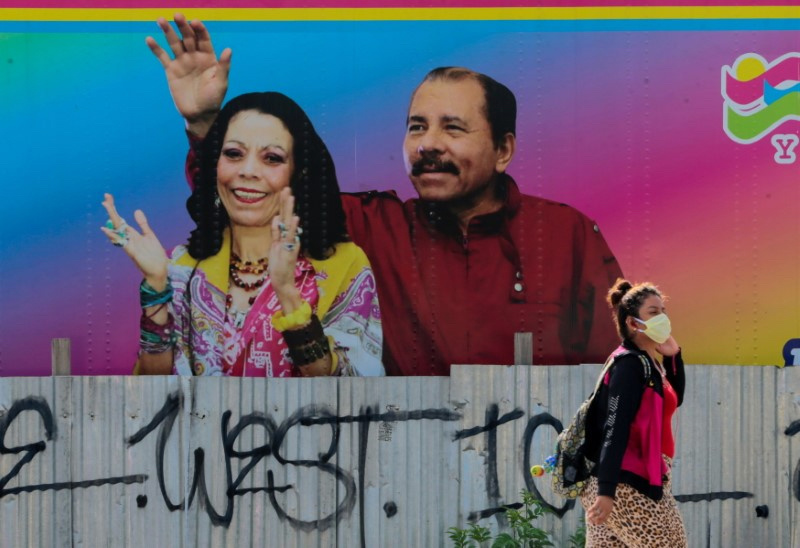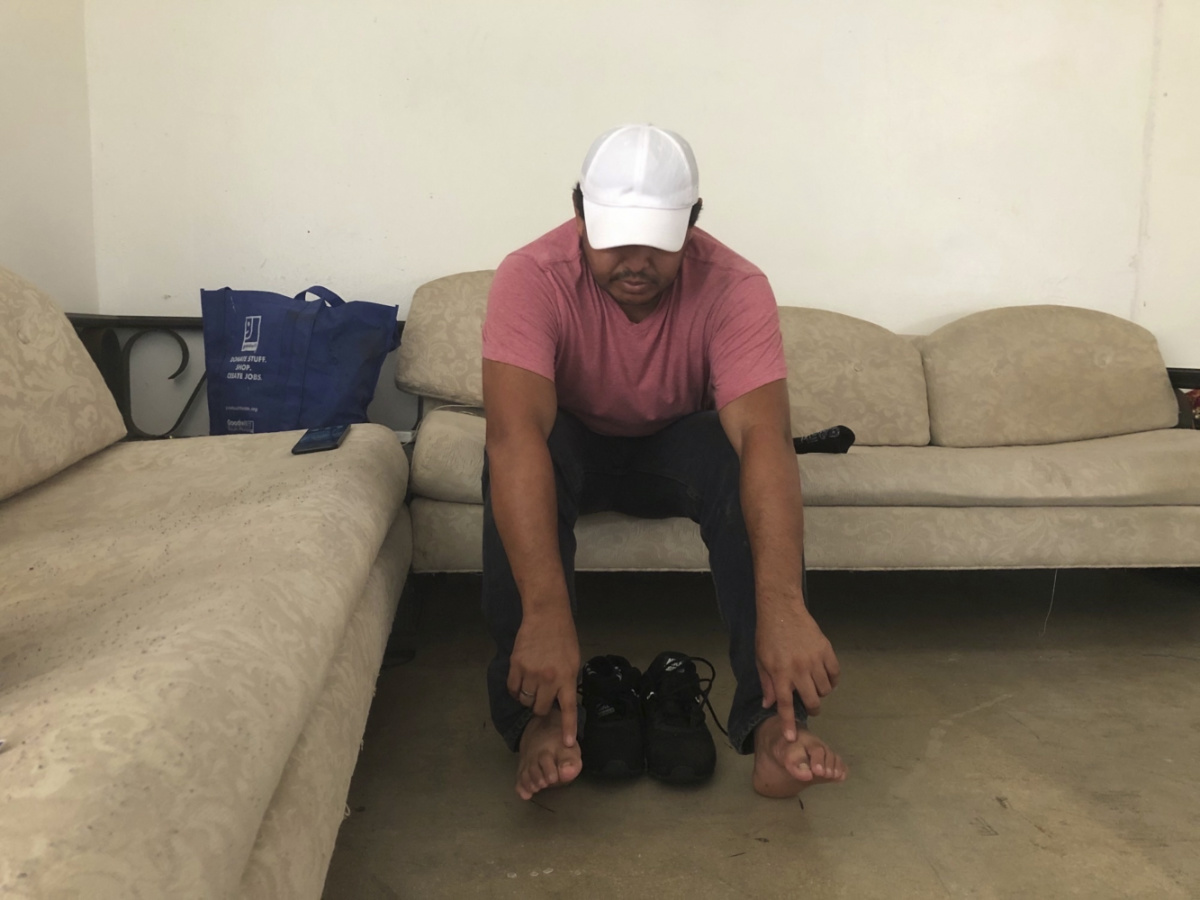
GISELA SALOMON and CLAUDIA TORRENS, of Associated Press, report on why a growing number of Nicaraguans are fleeing their home for the US…
Miami, Florida, US
AP
Alan Reyes Picado fled Nicaragua by bus in the middle of the night, haunted by memories of government officials harassing him, throwing him in jail and then leaving him half naked in a dumpster.
After crossing the Mexican-US border in February and being detained for two months, the 20-year-old immigrant lives in San Francisco and hopes to receive a work permit soon.
“I lived in fear and decided to seek help in this country,” said Reyes Picado, who left his partner and an eight-month-old baby in his home country.

Alan Reyes Picado poses outside his home, as his niece looks on from behind, in San Francisco, California, on 9th July. Reyes arrived in the United States in February after receiving death threats in Nicaragua and is asking for asylum. PICTURE: AP Photo/Eric Risberg.
Reyes Picado is one of the thousands of Nicaraguans the US Government has encountered at the border in recent months. Customs and Border Protection data shows a big jump in arrivals from the Central American country, which is the focus of international criticism over arbitrary arrests and the restriction of fundamental rights.
US authorities stopped Nicaraguans 7,425 times in June compared to 534 times in January. So far in the fiscal year that began 1st October, US officials have stopped Nicaraguans more than 19,300 times at the southern border (editor’s note – as at the time of writing). That’s the highest number of encounters registered in recent years, surpassing record figures from fiscal year 2019, when authorities stopped Nicaraguans more than 13,000 times.
“It is with sadness that we see again the migration of Nicaraguans, mostly young people fleeing because of political persecution.”
– A statement from Managua’s Roman Catholic Archdiocese.
At that moment, Nicaragua was immersed in a political crisis after the government announced a plan to cut social security benefits. Widespread protests caused the government to back down, but demonstrations grew into a movement demanding that President Daniel Ortega step down after more than a decade in power. At least 328 people died during repression of the demonstrations, said the Inter-American Commission on Human Rights.
Now, Ortega is seeking a fourth consecutive term as president in elections in November and has been systematically clearing his path of potential challengers through arrests for alleged crimes against the state.
According to the rights commission, more than 20 people have been detained, including presidential candidates Cristina Chamorro, Arturo Cruz, Félix Maradiaga, Juan Sebastián Chamorro, Miguel Mora, Medardo Mairena and Noel Vidaurre.
Ortega’s government did not respond to requests for comment from The Associated Press.
Hundreds of thousands of migrants from other countries have also arrived at the US border this year, as the new administration of President Joe Biden has eased some restrictions on immigration imposed under former President Donald Trump.
Other nationalities have also shown large increases, including Ecuadorians and Venezuelans. In June, more than one of four people stopped by CBP were from countries other than Mexico, Guatemala, Honduras and El Salvador.
Nicaraguans have usually been a small number of the Central Americans trying to migrate to the US. However, Nicaragua’s government migration offices are now full of people trying to obtain passports, a scenario that also occurred during the 2018 crisis.
Managua’s Roman Catholic Archdiocese has noticed the exodus.
“It is with sadness that we see again the migration of Nicaraguans, mostly young people fleeing because of political persecution”, the Archdiocese said recently.

A woman walks in front of a picture of Nicaraguan President Daniel Ortega and Vice President Rosario Murillo in Managua, Nicaragua, on 27th March, 2020. PICTURE: Reuters/Oswaldo Rivas/File photo.
Reyes Picado, the 20-year-old who recently fled Nicaragua, participated in the 2018 protests with his brother. Recently, he said in a telephone interview, local officials in Tipitapa, a city in western Nicaragua, would show up at the family’s truck depot asking to use the six trucks the family had. He said the government wanted the trucks to move its supporters around.
Reyes Picado’s family said no to the request and that’s how their problems started, he said.
“They would look for me at home; we couldn’t live in peace,” he said. “They would threaten us because we did not want to join them; they told us they would kill us, they would kidnap us.”
White House officials did not respond to a request for comment by The Associated Press regarding the increase in arrivals of Nicaraguans. US Senator Tim Kaine of Virginia, chair of the Senate Foreign Relations Western Hemisphere Subcommittee, told the AP that the arrests of political rivals in Nicaragua and violence against the opposition “must be stopped”.
“These actions are destabilising Nicaragua and forcing Nicaraguans who are fearful for their lives to flee their country,” he said.
Anita Wells, an activist who helps fellow Nicaraguans on their way to the US and recent arrivals, said she is “overwhelmed” with work.
“We have tons of people, of young men, in detention centers. Some are hurt, some are former political prisoners, and still, some of them are not allowed in [the US],” she said from her home in Virginia.
Wells is one of the founders of Abuelas Unidas por Nicaragua (Grandmothers United for Nicaragua), a group that raises and sends money to Nicaraguans in need. She is also one of the founders of the Nicaraguan American Human Rights Alliance, which has increasing work because it assists with asylum applications and tries to avoid the expulsion of Nicaraguans at the border.
Like Reyes Picado, José Olivera also fled Nicaragua, leaving behind a wife and two children.
A sales executive in an appliances company based in the north of Nicaragua, Olivera took buses and walked towards the US border in May after being fired for not accepting an ID card indicating support for the official political party, the Frente Sandinista.
Government officials would knock on his door insisting he accept the card, and soon the threats started, he said.
“I never accepted the offer of being one of their supporters,” said the 38-year-old from his small apartment in Miami. “Honestly I’m scared, they would have killed me.”
He fled to Honduras and then Guatemala by bus. Afterwards he walked, following train tracks until blisters hurt his feet. In Mexico, he said he was kidnapped by drug traffickers. Relatives put together $US6,500 and Olivera was released three days after, he said.

Jose Olivera shows blisters on his feet after fleeing Nicaragua, at his apartment in Miami, Florida, on 27th June. Olivera said he bussed as far a Guatemala before walking along train tracks to reach Mexico, where he was kidnapped by drug traffickers and released after his family paid his captors $US6,500 ransom. Once at the US border in June, five weeks after leaving Nicaragua, he asked for asylum and was held two days in a detention center before being released with an ankle bracelet. PICTURE: AP Photo/Gisela Salomon.
He crossed the border in June and told Customs and Border Protection officials he wanted to ask for asylum. After being in a detention centre for two days, he was released with an ankle bracelet.
The number of Nicaraguans entering the US legally also is increasing: It went from 3,692 in January to 7,375 in June, according to CBP data. Immigration attorneys and activists say that many of those Nicaraguans decide later whether to ask for asylum in the US or return home before their visa expires.
“I feel better now because I know I can be safe. I miss my family but I know they will be here with me one day.”
– Alan Reyes Picado
Nicaraguan asylum-seekers seem to fare well in US immigration courts compared to people from neighboring countries. The grant rate for Nicaraguan asylum-seekers was 36 per cent in the 12-month period that ended 30th September, compared to 26 per cent for all nationalities, 17 per cent for El Salvadorans, 13 per cent for Guatemalans, 12 per cent for Mexicans and 11 per cent for Hondurans, according to Syracuse University’s Transactional Records Access Clearinghouse.
Reyes Picado dreams of being among these lucky ones.
His brother, who also participated in the student protests and was kidnapped by paramilitary groups in the 2018 upheaval, won asylum in the US.
For Reyes Picado, life in Nicaragua meant moving in with his aunt to avoid putting his immediate family in danger.
In December, 2020, a paramilitary group, their faces covered in black ski masks, took Reyes Picado and handed him over to police. He was detained for three days, he said. He then was handcuffed, sprayed with gas in the eyes and left half naked in a dumpster in a rural area.
“I feel better now because I know I can be safe,” he said. “I miss my family but I know they will be here with me one day.”
– TORRENS reported from New York; ELLIOT SPAGAT contributed to this report.





